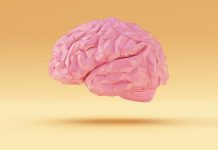
Social anxiety can be a highly debilitating psychiatric disorder with negative impacts on the individual’s relationships and working life.
In a recent study from Uppsala University, researchers found that the balance between the neurotransmitters serotonin and dopamine may affect whether a person develops a social anxiety disorder.
Previous research has mainly focused on either the serotonin or the dopamine system individually.
This study demonstrated the existence of a previously unknown link between the two.
The study is published in Molecular Psychiatry. One author is Olof Hjorth, a Ph.D. student at the Department of Psychology at Uppsala University, Sweden.
In the study, the team found a big different balance between serotonin and dopamine transport in people with social anxiety disorder compared with healthy people.
The interaction between serotonin and dopamine transport explained more of the difference between the groups than each carrier individually.
This study shows that affected people may have an imbalance between the serotonin and dopamine transporters in the amygdala and other brain areas that are important for fear, motivation and social behavior.
The functioning of the brain’s signal substances is affected by the amount of reuptake by the transmitter cell, which is controlled by specific transporter proteins.
The team says one should not focus exclusively on one signal substance at a time, the balance between different systems may be more important.
The method used in the study is called positron emission tomography (PET), in which radioactive agents, injected into the bloodstream, decay and release a signal that allows the scientists to determine the density of available transporter proteins in different areas of the brain.
The researchers hope that the current findings can lead to a better understanding of the causes of social anxiety and ultimately to new, more effective treatments.
Copyright © 2020 Knowridge Science Report. All rights reserved.



